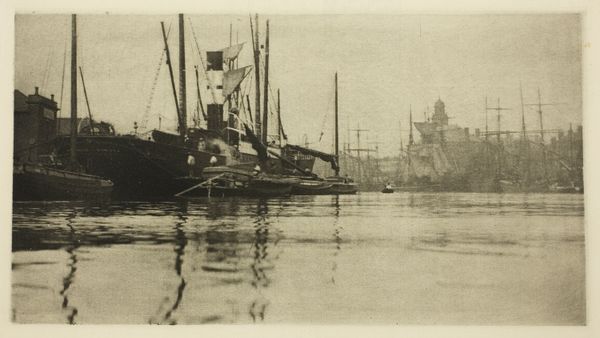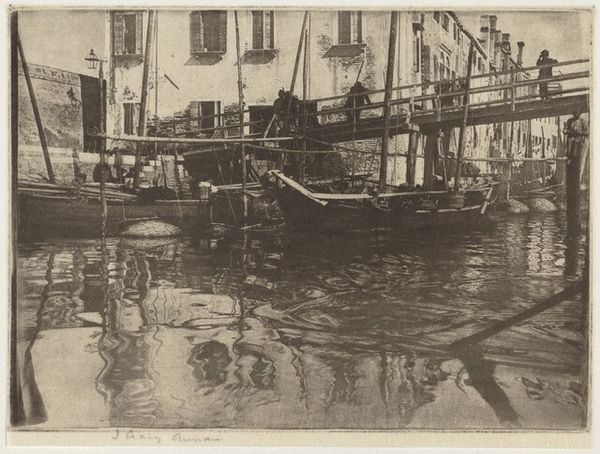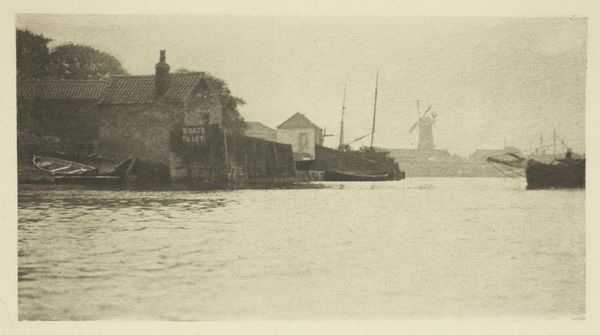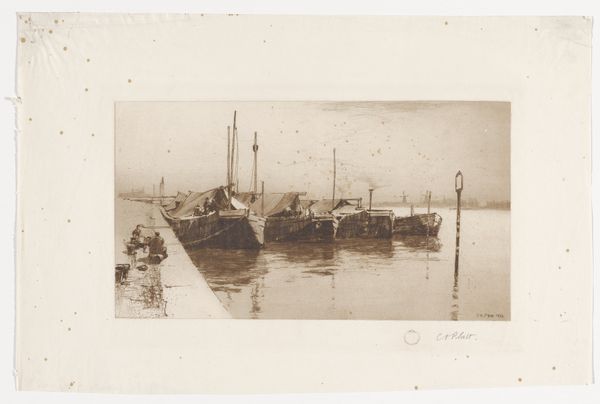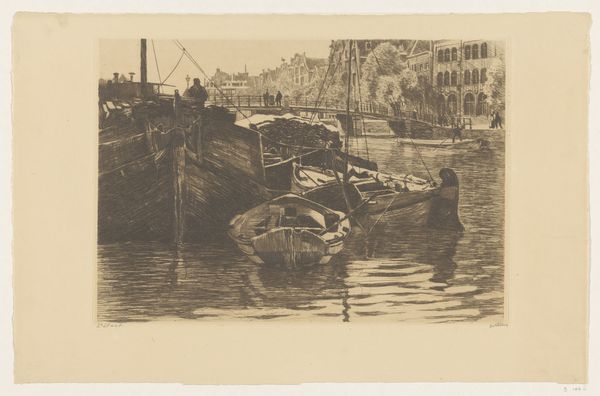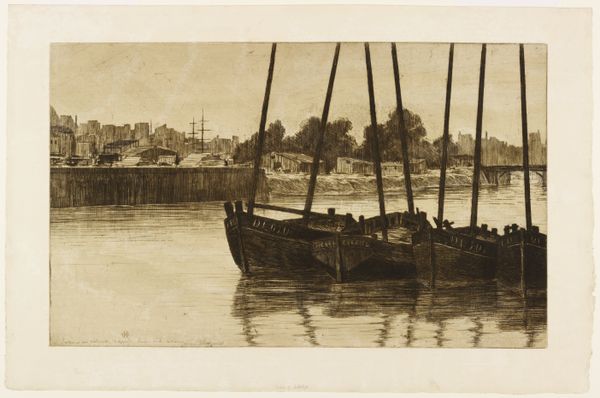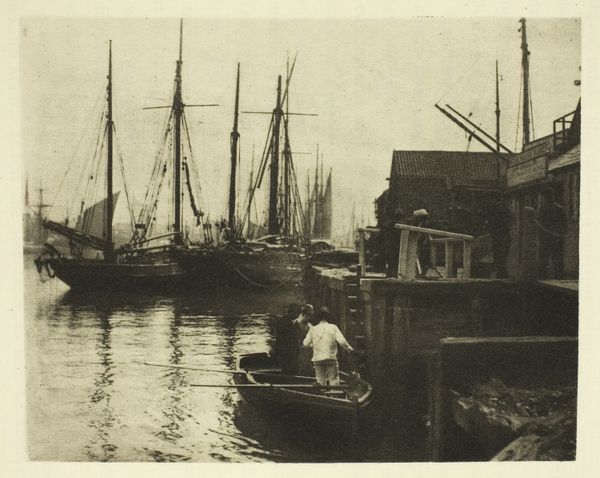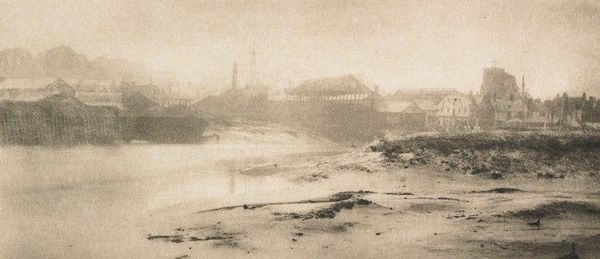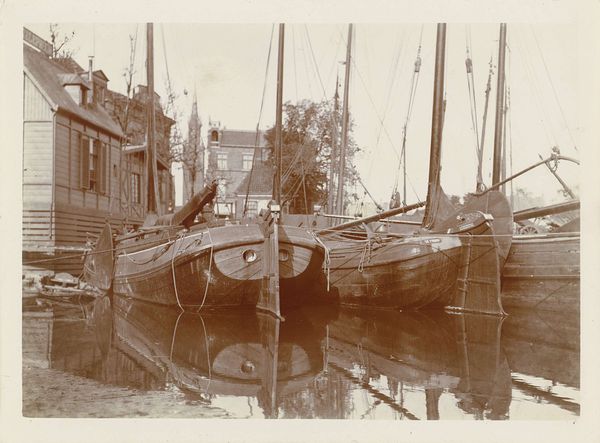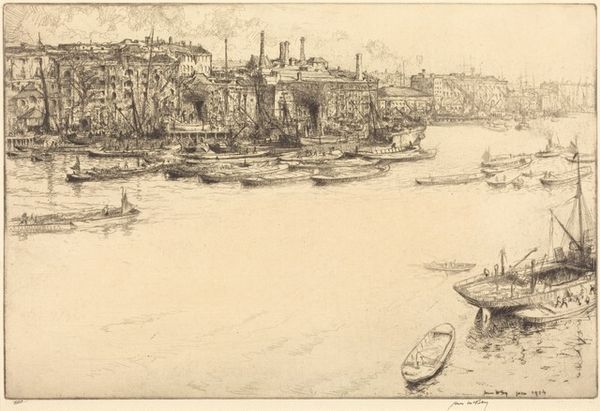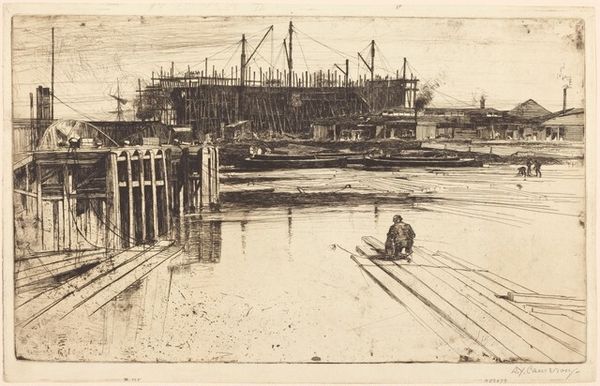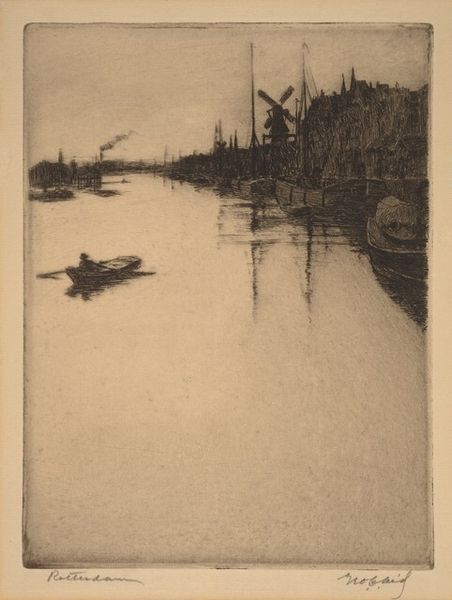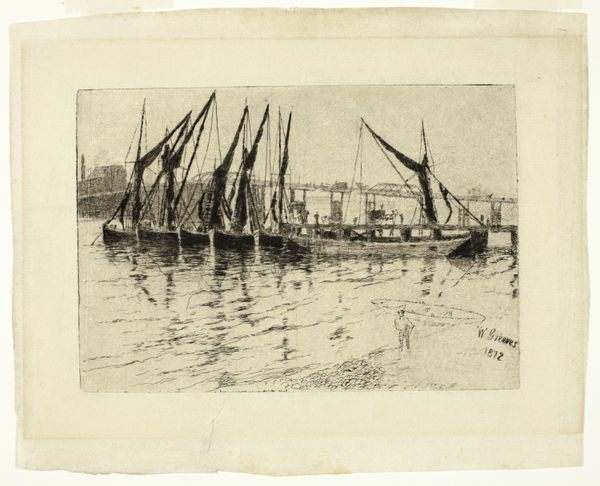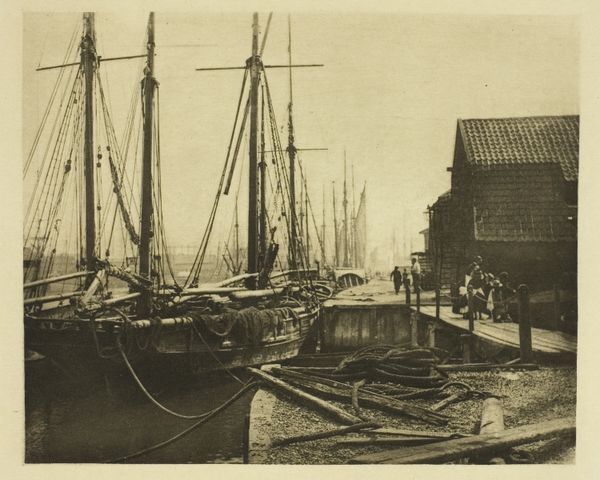
Dimensions: plate: 16.03 × 25.4 cm (6 5/16 × 10 in.)
Copyright: National Gallery of Art: CC0 1.0
Curator: This etching from 1909, by Ernest Stephen Lumsden, depicts "Menzies and Co." – a waterside scene rendered in sepia tones. What is your initial reaction? Editor: The quiet industry, almost muted in its activity, creates a strong sense of the past. The water itself is particularly engaging, with so much movement suggested despite the static medium. It's reflective and transient, like memory itself. Curator: Exactly. Think about what rivers symbolize – flow, change, and the negotiation of borders, both literal and figurative. The waterfronts are pivotal contact zones, locations for the exchange of commodities, but also, more significantly, sites for intercultural encounter. Lumsden highlights this with a composition dense with details and laborers. Editor: Notice the architectural motifs. The cranes loom like mechanical deities presiding over commerce. Menzies and Co. must be a central location in this city's structure, as a locus of industry that ties directly into its economic narrative. It also seems as though industry, which is largely conducted by men, separates them from this more active presence of flowing waters. The workers load their goods methodically against that backdrop, and they almost look like a sacrifice. Curator: Fascinating, the theme of sacrifice echoes in labor studies which emphasize the dehumanizing aspect of industry upon working bodies and their communities. The very name, "Menzies and Co.," implies a certain patriarchy, a business built upon the contributions of a collective reduced to a proper noun. Lumsden positions the structures that constrain movement against the implied open possibilities in a riverfront view. The image hints at underlying power structures within this port city. Editor: What’s also telling is how muted the palette of this work is. There is very little variation across the tones. Even though an etching can often have sharp precision, here the line is soft. One almost feels the artist created an artifact rather than documentation; like the city’s memories rendered tangible. The artist isn't just presenting us with a location, but more importantly, communicating the experience and perception of place over time. Curator: By embracing Impressionistic techniques in etching, Lumsden blurs those sharp delineations, inviting the viewer to contemplate not just the physicality of the scene but the emotional resonance of its cultural and social narratives. It’s an invitation to read deeply, to find those layers and legacies within. Editor: It reminds us that these industrial ports and their attendant waters hold far more than commerce; they contain narratives of labor, societal dynamics, and lived experiences embedded within our collective memory.
Comments
No comments
Be the first to comment and join the conversation on the ultimate creative platform.
